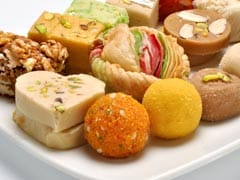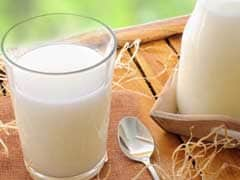Ethiopian Food: Eaten With Hands Like A Sort Of Bohri Thaal
Meher Mirza | Updated: January 27, 2018 10:31 IST
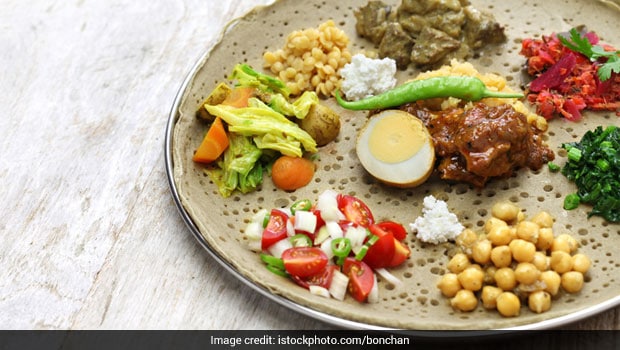 The day I told my friends I was travelling to Ethiopia is the day I learned that Ethiopian food is The Next Big Thing. "Oh my god, you're going to Ethiopia!" they gushed. "The food is excellent! How lucky you are!" I thought this was remarkable in a country (and city) that hasn't shown much interest in any sort of African cuisine at all. As far as I know, Mumbai has a couple of Nigerian restaurants, which are mostly patronised by visiting Nigerians, and that's it. I also remember reading about an Ethiopian food popup hosted by an Indian lady, but that seemed to be about the end of the matter.
The day I told my friends I was travelling to Ethiopia is the day I learned that Ethiopian food is The Next Big Thing. "Oh my god, you're going to Ethiopia!" they gushed. "The food is excellent! How lucky you are!" I thought this was remarkable in a country (and city) that hasn't shown much interest in any sort of African cuisine at all. As far as I know, Mumbai has a couple of Nigerian restaurants, which are mostly patronised by visiting Nigerians, and that's it. I also remember reading about an Ethiopian food popup hosted by an Indian lady, but that seemed to be about the end of the matter.Spicy!
Ethiopian food is quite spicy, which is surprising because the food seems almost calibrated to please Indian taste buds. There are many similarities in both cuisines - the use of chilli being an important one. In Ethiopia, the chilli is blended into the very popular Berbere Spice Mix. 'Berbere', in Amharic, the official Ethiopian language, means 'hot' and it was a spice mix that lived up to its name. Used as a base for dishes such as Misir Wot and Doro Wot, in conjunction with a variety of other spices and herbs, Berbere certainly appealed to my spice-loving Indian tongue. And it isn't just the chilli. Ethiopians use a lot of spices in their cooking, that are very well-known to us back here in India - think fenugreek, coriander seeds, peppercorns, cinnamon, turmeric, and cardamom.
(Also Read: Can a Cup of Green Coffee Help You Lose Weight? You'll Be Surprised!)
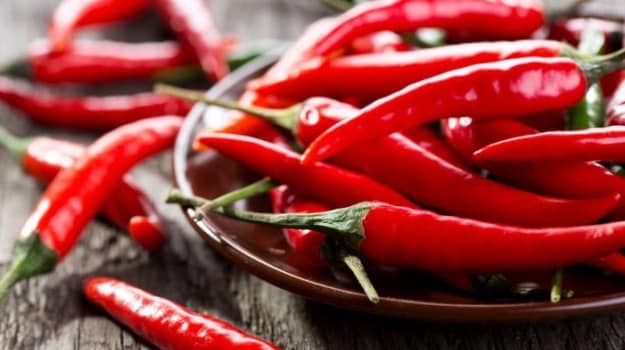 Ethiopian food is quite spicy
Ethiopian food is quite spicyGarlic, shallots, ginger and onions too, make their way into many gravy dishes, making for a rather familiar eating experience. There is no pussy-footing here; the flavours are pulsing, complex and layered, but strong. Spicy really does mean spicy here!
Cook Like An Indian
There is no doubt that the Ethiopians are a meat-loving nation. Beef and mutton feature heavily in their meals: for instance, kitfo, available almost everywhere, is raw beef, roughly chopped with African birds eye chillies and nitre kibbeh (which is a sort of spiced ghee, another Indian connection); there is Menchet Abesh, which is spicy minced beef stew; Awaze lamb, which is lamb fuelled by berbere.
Chicken appears on their star dish, the doro wat, which often requires advance orders to be placed. For doro wat, chicken drumsticks are steeped in a stew of berbere, then hard-boiled eggs are introduced into the mix. To me, it tasted very Indian, burnished with the sweetness of caramelised onion, interposed with spicy chilli flavours.
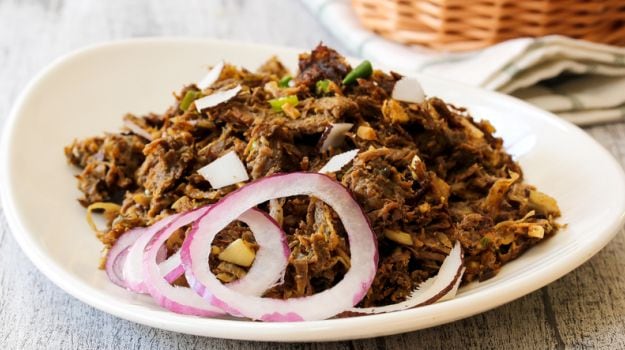
Vegetarian food is often relegated to the margins of the meal, if at all. However, there is a time when it takes precedence, and that is during fasts. In fact, a lot of menus carry their vegetarian food under the name Fasting Food. Vegetables are not as abundant in Ethiopia as they are here, but you get plenty of cabbage, sugar-sweet crimson beetroot, dark, leafy gomen (a type of collard green, perhaps?), and carrots, cooked until they soften and relax. In the restaurants I travelled to, the availability of Fasting Food was a wobbly thing though; available constantly before Christmas (it is celebrated as per the Orthodox Christian calendar in January, and many people fast devoutly for it), and uncertain after.
Lentils are available everywhere. Deffen misir alicha, softened lentils suggesting a dal of sorts, and the racy misir wot, red lentils smouldering in a berbere paste, were sold often and everywhere.

There was always one thing that stood out for me though - shiro, a glorious golden concoction made by chickpeas, onions and spices, cooked until it all collapses into a piquant, smoky puddle. Eating it for the fourth time in a week with my guide, I was told by the wait staff that it is very popular with Indians. "Many Indians order this always. They really like it."
In fact, I liked it so much that I bought myself a huge packet of shiro masala in the shop, and it has since perfumed all my clothes in the suitcase.
And the condiments! Everywhere the condiments! Most restaurants we ate at, served us awaze, a sort of pickled hot sauce, fiery hot, meant to be eaten with bread. The first time I took a tentative taste, I was not expecting the scorch of the chillies; they blasted my tongue, much like a chilli pickle back home.
Injera
And now to what is perhaps the backbone of the cuisine i.e. injera. Injera is a delicate, crepe-like dish made from fermented grains of teff, which is grown only in Ethiopia (ragi comes closest to it, I think). The closest I can come to describing it is by likening it to a dosa, or an appam, with a tinge of sourness; it is flat, fermented, and filigreed with tiny sinkholes, soft and pliant. Injera is everything in an Ethiopian meal - the starch element, the plate, the utensil.
Injera is everything in an Ethiopian meal - the starch element, the plate, the utensil.
It is unfurled onto an enormous plate, and the stews (wots) are ladled generously over it. One breaks off pieces with one's hands (just like eating with chapati), and scoops up pieces of the stew. Quite often, the food is served in Bohri thaal fashion, with the whole table plucking from one enormous injera. The best bit? Right at the end, when the stews are finished, and the runoff of the sauces has soaked into the injera.
Dessert
There isn't any. Ethiopian cuisine, sort of like Indian cuisine, doesn't really have the concept of dessert. I found plenty of sweet breads, gateaus and puddings, but none for pud. They only offer fruit at the end of a meal, if at all. But such superb fruit! Banana, mango, papaya, apple, strawberry, tiny plums (resembling bor), pineapple - it was a glorious (and healthy) end to mealtimes.
 Glorious way to end the meal
Glorious way to end the meal- Happy Birthday Bobby Deol: 5 Fitness And Diet Secrets Of The Race 3 Actor!
- 5 Best Nuts To Consume While On A Weight Loss Journey
- 5 Midnight Eateries In Delhi For Your Late Night Cravings
- Here's Why You Shouldn't Drink Water Right After Eating Peanuts
- 5 Best Coffee Shops In SDA That All Coffee Lovers Must Try
- Hot Or Cold Milk: Which One Is Nutritious And Healthful?
- Valentine's Day 2018: 5 Romantic Breakfast in Bed Ideas To Celebrate Love!
- 10 Best Restaurants For A Romantic Candle Light Dinner In Delhi
- Republic Day Special: 29 Desserts From 29 States Of India
- Foods To Cure Angry Or Hostile Mood: Ayurvedic Home Remedies And Diet To Cool Temper
